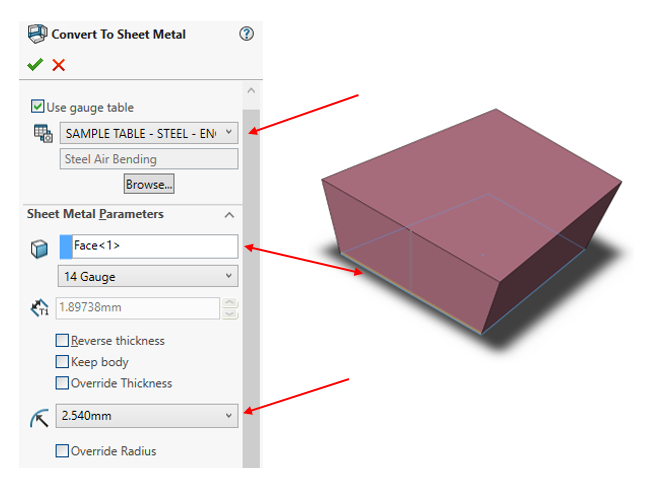-
Sheet Metal Gauge Table Solidworks카테고리 없음 2020. 2. 10. 06:51
SolidWorks: Sheet Metal Design. TEDCF Publishing. K-Factors and BA, Bend Deduction, Bend Tables, Gauge Tables, Sheet Metal Templates, Basic Construction Strategy, Closing Corners, Hems in Detail, Bottom Up Sheet Metal Part I, Bottom Up Sheet Metal Part II, Bottom Up Sheet Metal Part III, Custom Drawing Bend Lines, Sheet Metal Drawing Colors.

Sheet Metal Gauge Table Solidworks Tutorial

SolidWorks sheet metal design capability makes manufacturers within the sheet metal product industry to easily derive flat patterns with required gauge and bend allowances quickly. It is because of these friendly features that makes SolidWorks as one of the leading choices for engineers across the globe.Making a sheet metal part is although quick, there may be instances when the 3D CAD modeling might be started as a solid and then the requirement would be of converting the solid to a sheet metal part. The major difference between a sheet metal and solid part is that for sheet metal, the part is formed from a flat sheet as compared to solid where the part is formed by removing material from a solid piece of metal. CAD specialists also prefer to develop a part through solid or surface models for difficult sheet metal designs and then convert it into a sheet metal flat pattern.SolidWorks offers a great feature called ‘Convert to Sheet Metal’ to help which can then be flattened and utilized for shop floor requirements. With this feature, a solid object can be easily converted to a sheet metal part with required gauge, k-factor and bend allowances. After the conversion, one can easily extract flat pattern drawings and fabrication for part manufacturing requirements.
To convert the solid part:. Create the solid part using the solid modeling tools. The example shown here is easy for solid modeling. For creating a sheet metal part however, it would require calculating angles, repeating bends, custom end flanges, etc. SolidWorks sheet metal modeling is quick and easy.
However, for complex components that require specifying details to accurately create a sheet metal model, utilizing this trick to first develop a solid model and then convert to a sheet metal model is extremely useful. Apart from increasing the productivity, the chances of errors and design changes reduces considerably. The designer does not have to worry about allowances and angles during the initial design process.Images Source: http://help.solidworks.com/2014/English/SolidWorks/sldworks/tsolidtosheetmetal.htm.
Attention, Internet Explorer UserAnnouncement: Jive has discontinued support for Internet Explorer 7 and below.In order to provide the best platform for continued innovation, Jive no longer supports Internet Explorer 7.Jive will not function with this version of Internet Explorer. Please consider upgrading to a more recent version of Internet Explorer, or trying another browser such as Firefox, Safari, or Google Chrome.(Please remember to honor your company's IT policies before installing new software!).